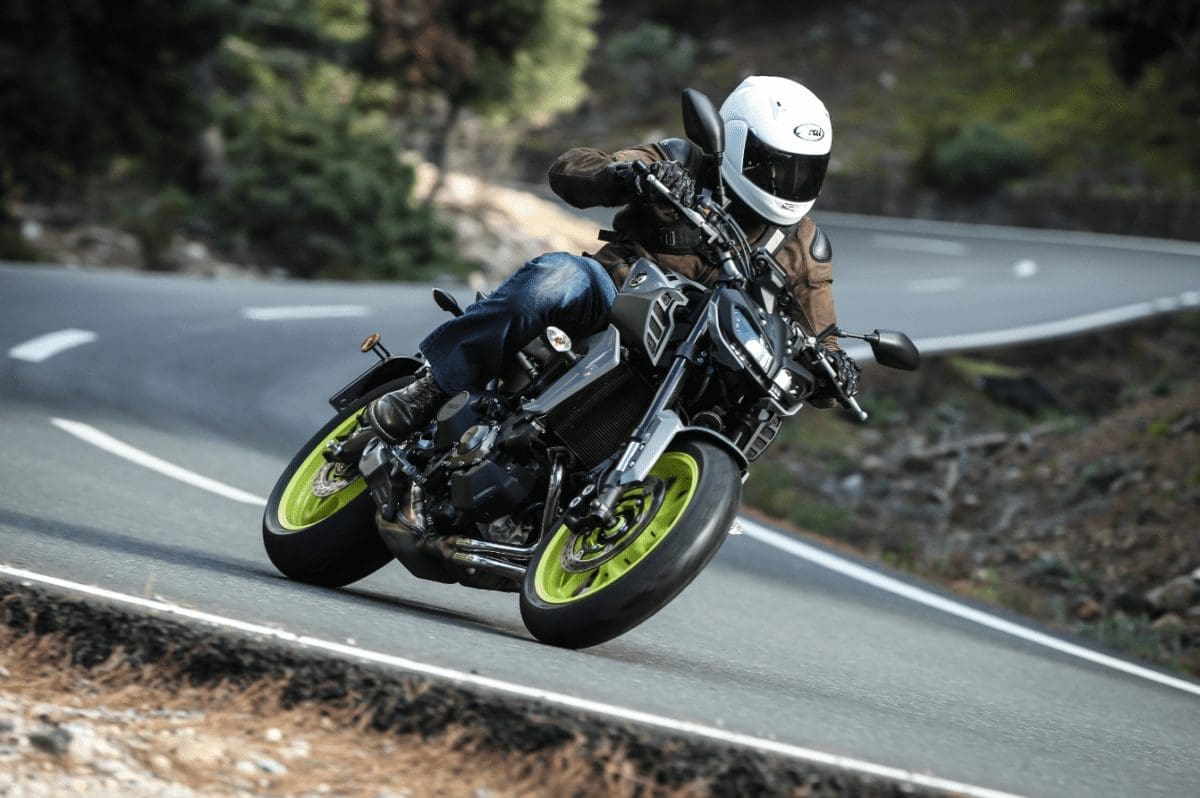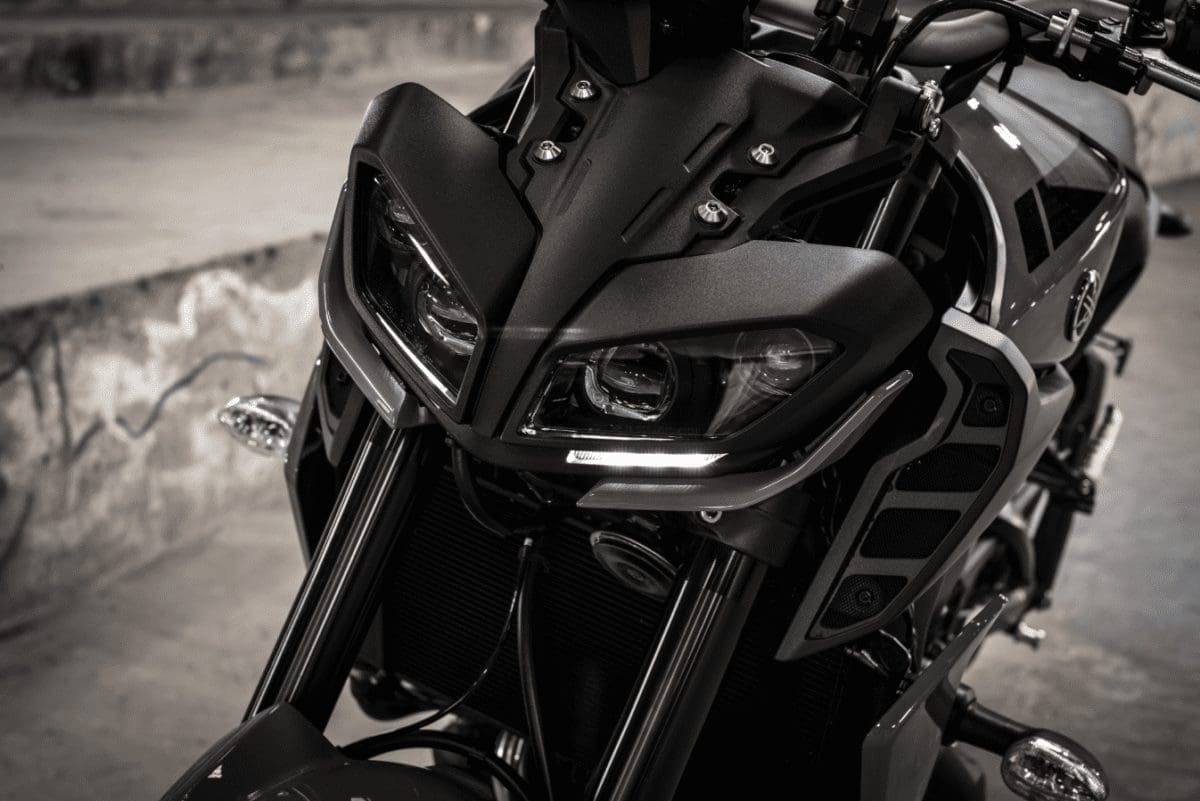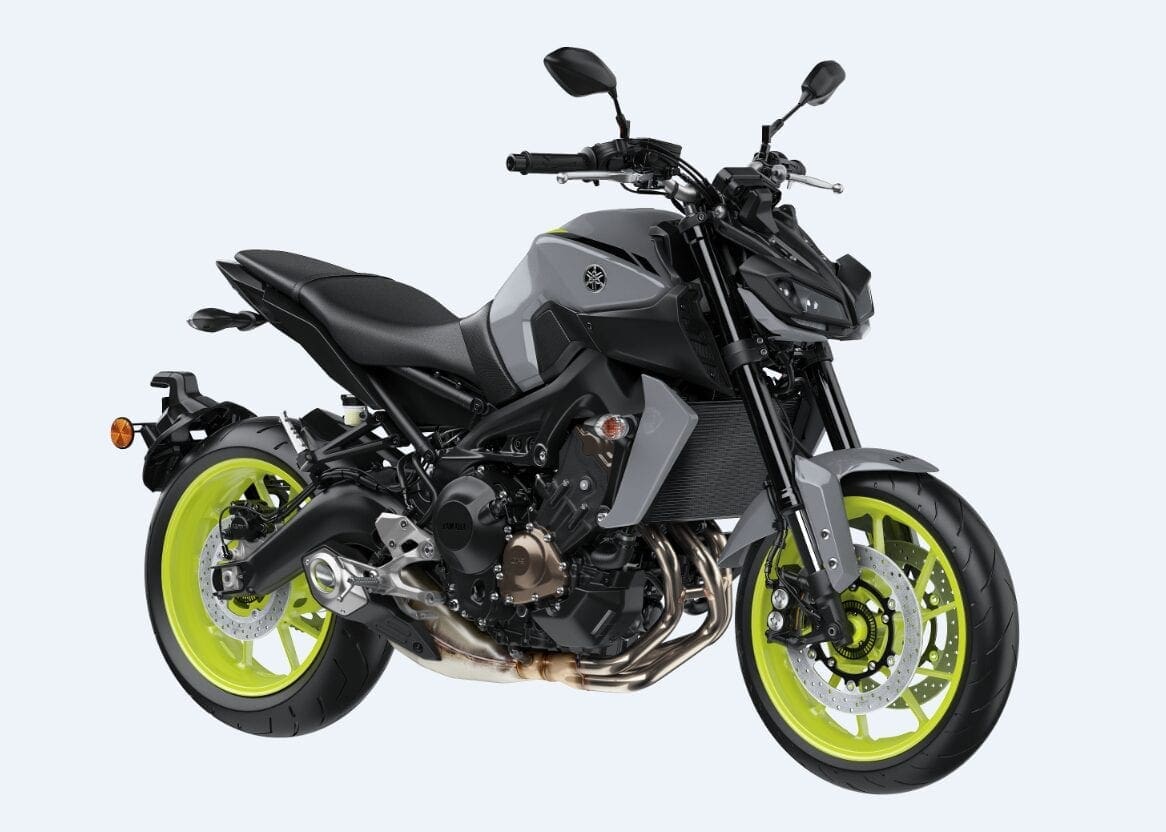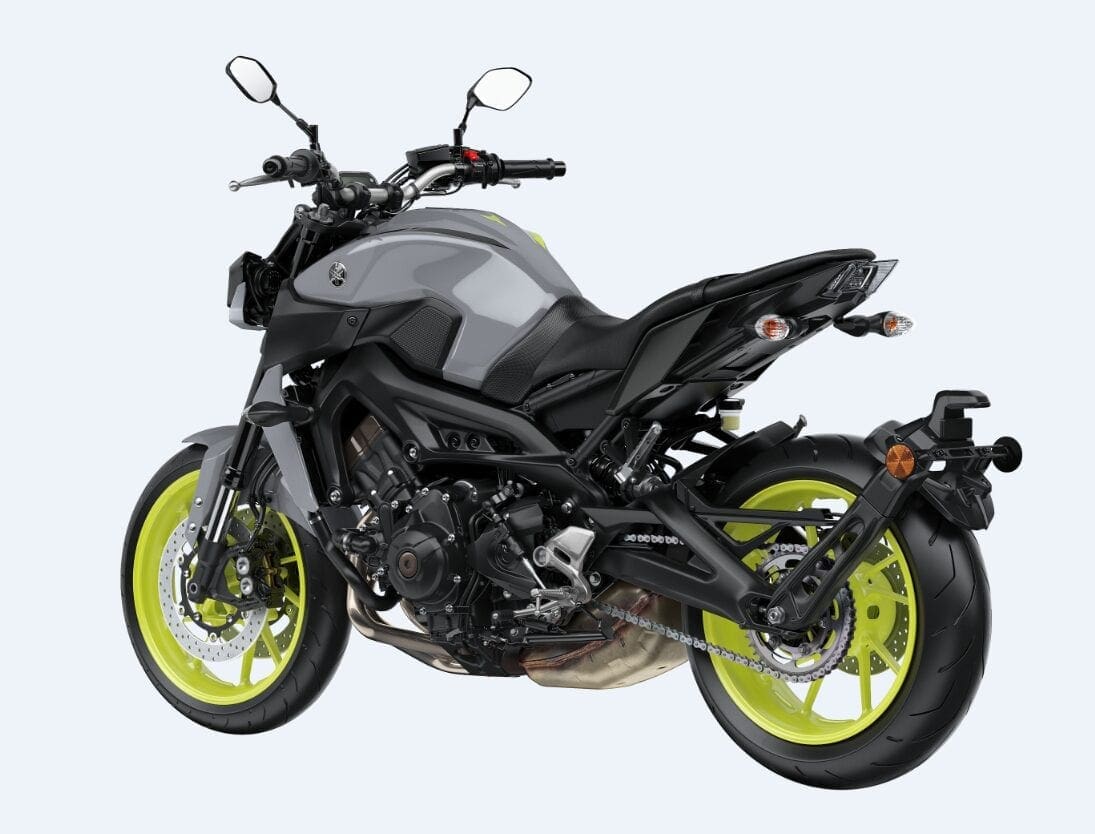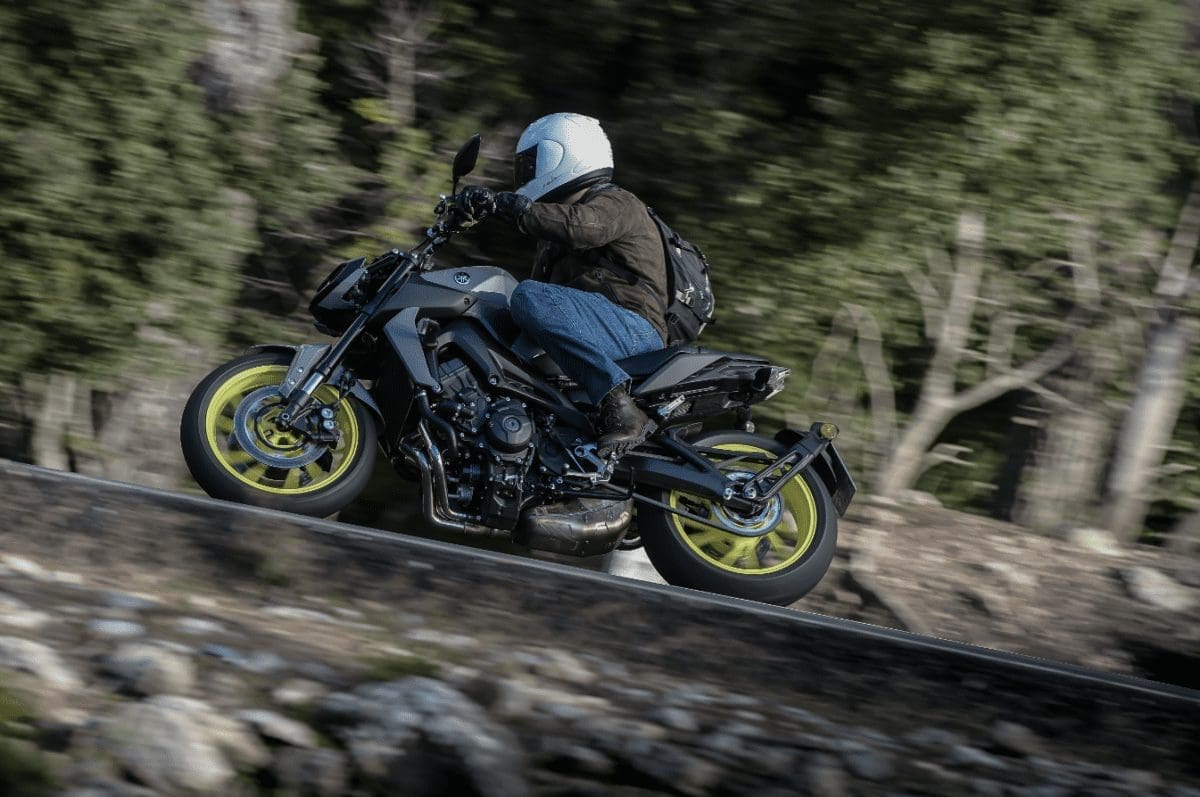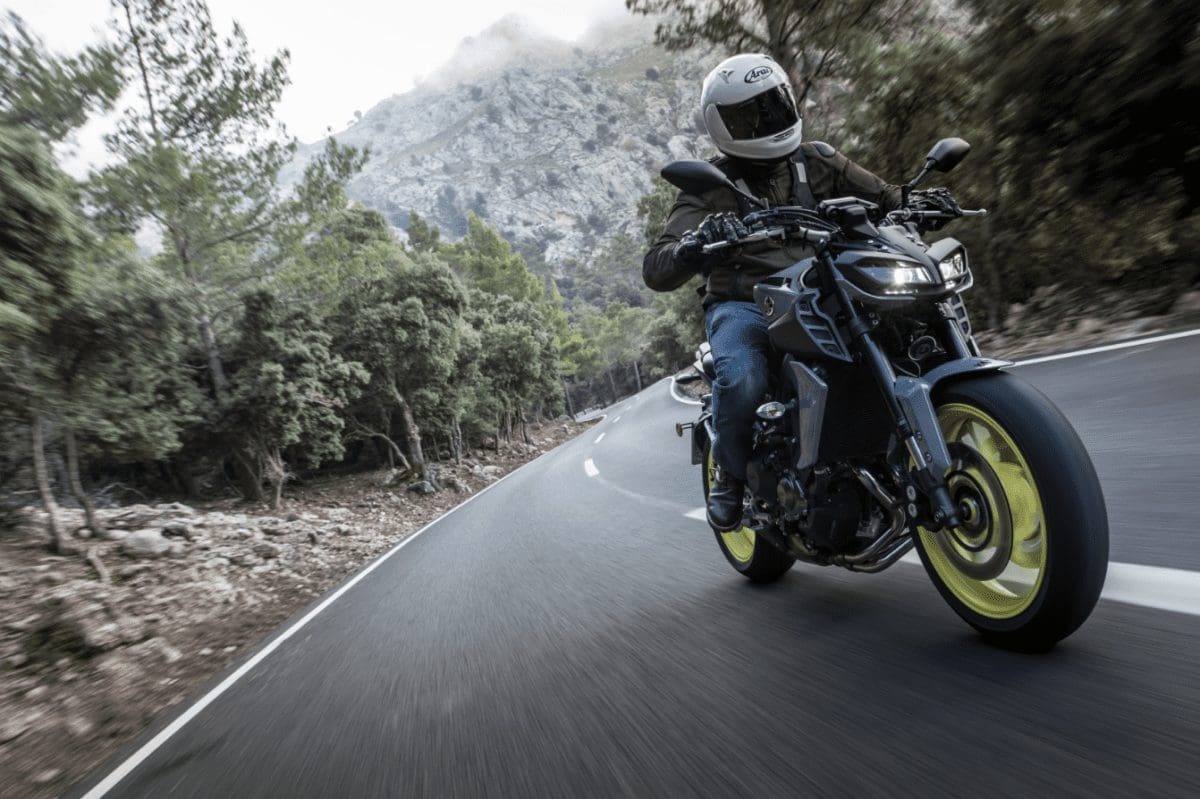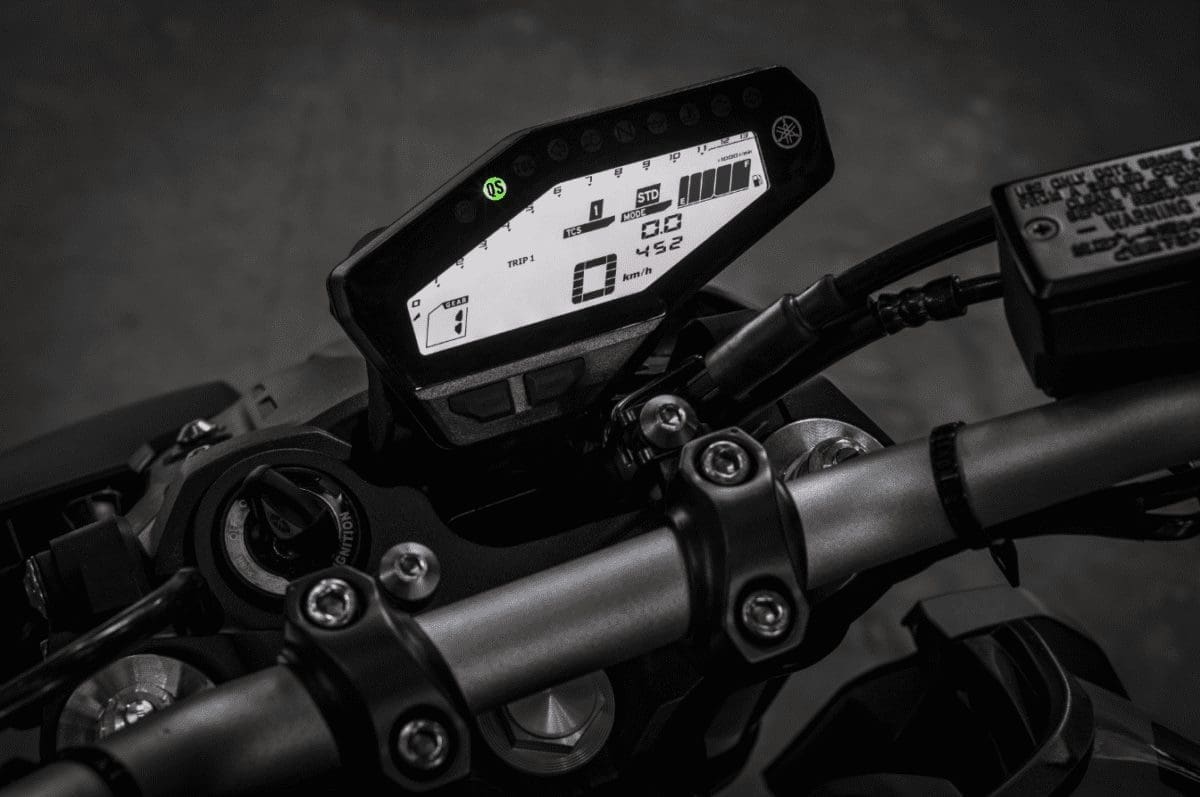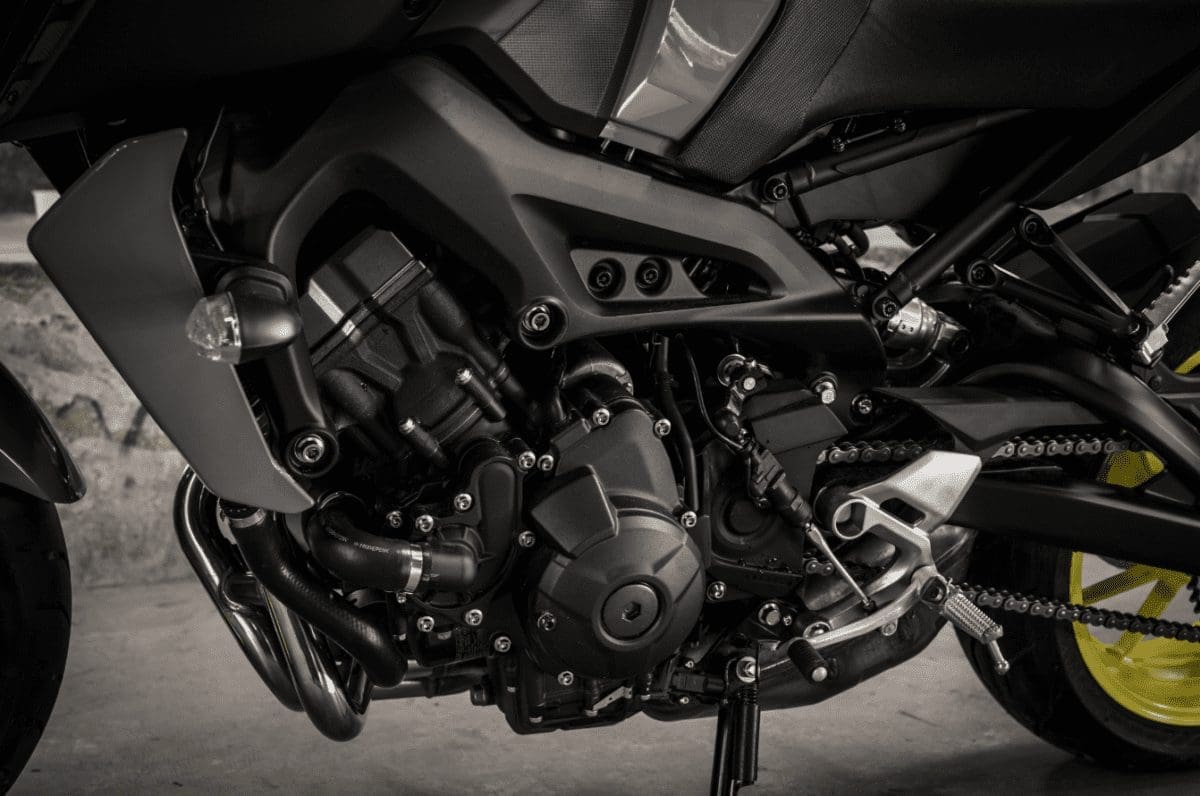Revamped for 2017, the new MT-09 remains true to its values…
WORDS: John Milbank, Editor, Motorcycle Sport & Leisure magazine
PHOTOGRAPHY: Yamaha
What each of us can afford to pay for a bike is invariably subjective. What some might consider a bargain price, others might well struggle with. But there can be no argument, surely, that 2017’s MT-09 offers extraordinary value for money.
In a post-referendum United Kingdom that’s seeing prices rise due to the pound’s struggle to buy in motorcycles, parts and accessories, the announcement from Yamaha that its hyper-naked would increase in cost by just £450 – to £7799 – was more than a surprise. The newly-fitted standard quick-shifter alone is worth that, but this revamp also includes an improved front fork with compression damping adjustment added to the rebound and preload, LED headlights, a new compact tail with a comfier seat, and a slip-assist clutch.
The MT-09 has been very important to Yamaha – after the difficult times suffered by the whole motorcycle industry, 2013’s release of the naked triple was something of a turning point. As one employee told me at the time, Yamaha had ‘turned the taps back on’ in R&D, and led the way as the manufacturer that arguably kick-started the country’s passion for motorcycling once more. It formed the basis of the Hyper Naked range, which now also includes the MT-10, MT-07, MT-03 and MT-125. 43% of Yamaha’s European sales in 2016 were Hyper Nakeds, while 20.5% were sport-tourers (the Tracers and FJR), 14.5% sport heritage (XSRs, VMAX, XJR and XV), 11.5% super-sport and 10% were others. The MT-07 may be the biggest-selling Hyper Naked, but it’s the MT-09 that’s still the most popular bike on Yamaha’s MT Tour, where riders are given the chance to try out the machines.
A concise revamp
The new bike, on paper at least, appears to be reinvigorating the playful aggression that many feared would be sanitised by ever-tightening regulations – it’s got the same 847cc 114bhp @ 10,000rpm, 65lb-ft @ 8500rpm engine as it’s had since 2013, along with an unchanged cast alloy frame. The tank still holds 14 litres, the wheelbase remains 1,440mm thanks to the unaltered alloy swingarm, and it’s still got impressively powerful radially-mounted four-piston calipers on the front. It was designed to look light and compact, and at 193kg with a full tank of fuel, it’s just 2kg heavier than it was last year.
The new design is influenced by the MT-10, and the headlights certainly make the previous model appear somewhat dated – a 2013 MT-09 pulled up during our photoshoot, and the difference was surprising. It was due a refresh, so it’ll be interesting to see how the new style ages, which reminds me of Kawasaki’s Z1000.
We only rode in the shade, not full darkness, but the four projector LED-equipped lamp unit seemed to be much more than cosmetic, giving what looks to be a very strong, clear white light. Other tweaks are aesthetic, like the larger air scoops, which still don’t actually feed the air-box, simply shielding some of the electronics. The LCD clock has been moved to be more within the rider’s line of sight, though the tops of the numbers on the rev counter are still half covered by the facia. It doesn’t interfere with seeing the rev counter display though, and was something I only noticed after another journalist pointed it out.
Granted, the saddle is slightly higher than it was on the previous models (by 5mm) but at 820mm, the narrow form makes it still very easy for me to put both my feet down fully at 5’10”. Along with the slightly rear-set pegs, the seat encourages your body towards the tank, but its a very comfortable position. In fact, it was only in the last twenty minutes of a six-hour day in the saddle that I started to become aware of any posterior protestations. And I’m usually the first to complain.
A touring seat is available, which has a flatter top, so doesn’t push you towards the tank as much, giving more room to move about forward and back. There’s also a supermoto-style flat, hard seat, though trying it briefly, I could tell it wouldn’t suit my riding style. My only criticism of the standard ergonomics was a small one – simply that with the balls of my feet on the pegs, the backs of my size 10 boots would get a bit caught against the pillion peg hangers.
The slip-assist clutch – first seen on XSR900 – is cable-operated, and while it’s still not the lightest action I’ve ever used, I certainly didn’t find it noticeable during the ride. It also means that, when down-changing aggressively, the bike stays more settled, not locking the rear wheel.
Traction control was introduced in the 2016 tweak, but it now has a much-needed memory function for the three riding modes (A, Std, B) and two levels of traction control. The latter can also be switched off, but will revert to the minimum intervention when the bike’s restarted; it’s changed by a convenient switch on the left bar, while the mode button is on the right. The throttle needs to be closed in order to make a change, but it’s all still very quick and easy to do. The buttons to change and reset the dash display are on the clock unit.
Stunning performance
I think the new bike looks great – I’m a fan of the new headlights, and while there’s no denying some of the parts, like the trim around the front of the tank, can look a little plasticky, the MT-09 has a solid look to it. Only on closer inspection are things like the exhaust end-cap a little disappointing, but overall I think the styling is a success – seeing it parked up, or watching someone else ride it, the new Yamaha certainly captures the aggressive, purposeful style. My only slight reservation is the back of the headlights, which look a little messy to me from the seating position. Chances are I’m one of the few that would think that though, and while I found I fell in love with the looks of the MT-10 once I saw it in the metal, I actually prefer the MT-09 as it’s a little less fussy, particularly at the tail.
It’s been a while since I last rode the original model, and if you haven’t tried one, I’d strongly recommend it – the surge in power as I pulled away at the start of the test really surprised me. And that was in the ‘Standard’ riding mode. I left it like this for about 20miles, then switched to ‘A’, as the slightly more immediate pick-up in corners and roundabouts worked well. Later in the day, particularly when it was wet, I went back to ‘Standard’, which is where I would imagine I’d leave it most of the time in the UK. ‘B’ mode would be good in the wet and in busy towns, but I found it a little too dulled. It only knocks 4bhp off the peak, but the throttle grip has a slight feeling of being connected to the injectors by a rubber band.
Whether using ‘Standard’ or ‘A’ mode, the MT-09 certainly lives up to its design brief and specifications – its low-down punch and raucous top-end are only tempered by a slight lull between 4500 and 6000rpm, resulting in a bike that feels controllably aggressive throughout the rev range. The induction sound has a never-ending growl, and while the fuelling isn’t perfectly fluid, it’s enormously enjoyable when ridden spiritedly, the electronics never giving the impression that they’re interfering with the ride and the slipper clutch working impressively smoothly.
The steering is light and direct in town – with a reasonable lock – but stable at speed – I’d best describe the bike as playful. Coming out of a bumpy corner early in the day, the front-end flapped a little, but never felt out of control as if a tank-slapper was imminent. Another time, as I accelerated away from a bend, the front lifted gradually, despite the traction control being on (in mode ‘1’, the minimum). In fact if you’re so inclined, a quick chop of the throttle in second gear will see the front lift easily, and a gentle wheelie can be carried a surprising distance.
But the traction control does work, as I found out in the afternoon when the roads were really greasy – the back spun exiting a corner and the rear stepped out enough to give me, and the rider following, a shock. Not something I wanted to do again, but it was reassuring to have the electronic safety-net.
It was only during these horrible conditions that I started to notice some of the MT-09’s rougher edges. While no bike would be enjoyable on these roads – which at points were green with lichen – when picking my way downhill at low speed and in second or third gear, the throttle felt quiet harsh: no matter how gently I’d roll it off or on, there could be quite a snatch to the fuelling. Combined with the rear shock, which seemed to amplify small imperfections in the road, it made for something of a choppy ride.
It’s a shame to criticise the machine for this, as otherwise it was utterly fantastic. I always seek out as many potholes as I can when riding through town streets on a launch, and here I was impressed with the Yamaha’s new fork and slightly revised read shock. It’s a firmish setup, far from the smooth ride of larger, more expensive adventure-style machines, but well-mannered and confidence-inspiring. Equally, while the throttle felt very immediate, and the second surge in power around 7000rpm occasionally caught me out a little, the delivery is perfectly suited to a machine with such gung-ho poise.
It’s a good package, and a tremendous engine, matched by superbly powerful radially-mounted semi-monoblock calipers. They can feel a little sharp at first, with quite an intimidating level of bite, but even on the awful roads in the afternoon, I never felt the unswitchable ABS cut in. One journalist did, and it was only after the front wheel had slid briefly, but he stayed on the bike. Riding fast, I had a couple of moments that required more braking force than I’d expected, but the Yamaha performed exceptionally well, a real feeling of power within that pair of four-piston calipers.
The quick-shifter impressed me too – I don’t tend to like them, preferring to simply roll off the throttle briefly while knocking up into the next gear, but in this case the gear change was smooth and positive at all but low engine speeds, with none of the glitching to the ignition that so puts me off some other systems when I unintentionally knock the lever slightly. It’s an up-shifter only, with no auto-blipper for down-changes, but still would be worth the increased price alone.
Like the Suzuki GSX-S1000 that some feel has a snatchy throttle response, the MT-09’s delivery will be of absolutely no concern to the vast majority of riders. This is certainly a bike you could live with, thanks to great mirrors, a comfortable yet sporty riding position, and a hugely characterful engine. I could feel some vibration through the right hand peg at first, but never noticed it again through the day.
I finished the 140mile ride with an average economy of 36mpg, which would give a range of 111miles from the 14 litre tank (we filled up at lunchtime). That’s significantly lower than the claimed 43mpg, which would deliver 133miles, but remember that launches tend to have a lot of hard acceleration and prolonged high speed. Realistically, I’d expect to get about 40mpg / 123miles if riding reasonably quickly in the UK.
Another stumbling block to the bike’s touring potential would be the pillion seat, which while wider and more comfortable than it was, has very high-set pegs, and only a strap to hang on to. Shorter riders might be happy, but anyone approaching my inside leg of 32” will not want to sit there for too long.
But that’s not the point of this motorcycle – it’s designed to be a light, compact, sporty machine. And in that respect it’s a huge success, excelling on fast, twisty roads. And that’s before you take into account the price.
Specification – 2017 Yamaha MT-09
Price: £7,799
Engine: 847cc liquid-cooled DOHC triple
Power: 114bhp (84.6kW) @ 10,000rpm
Torque: 65lb-ft (87.5Nm) @ 8,500rpm
Transmission: Six-speed, chain final drive
Frame: Cast aluminium diamond
Suspension: (F) fully-adjustable 41mm fork; (R) Single link-type shock, adjustable for preload & rebound
Brakes: ABS (F) 2x Four-piston radially-mounted semi-monoblock caliper, 298mm discs; (R) Single-piston caliper, 245mm disc.
Tyres: Bridgestone Battlax Hypersport S20R(F) 120/70 ZR17 (R) 180/55ZR17
Seat height: 820mm
Tank capacity: 14 litres (3.1gallons)
Kerb weight: 193kg
Contact: www.yamaha-motor.co.uk

